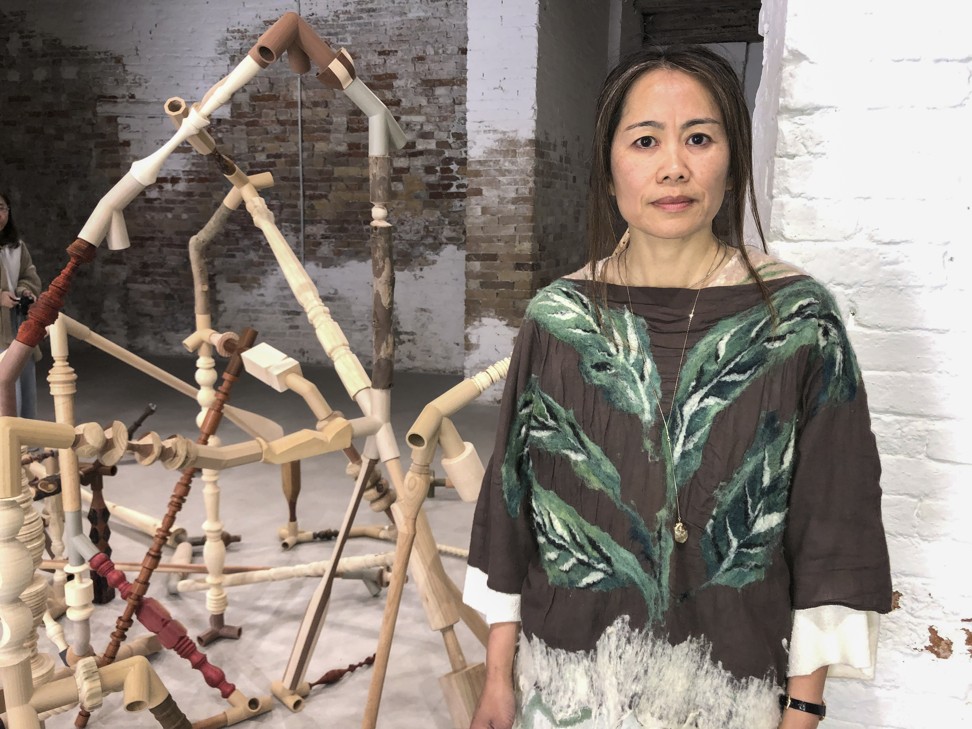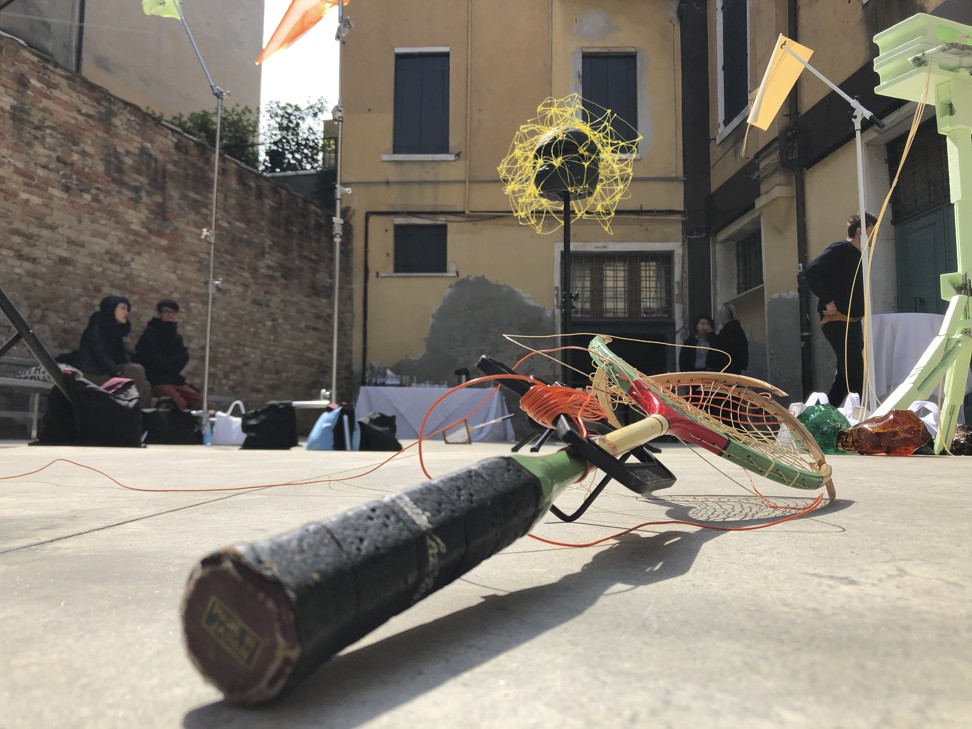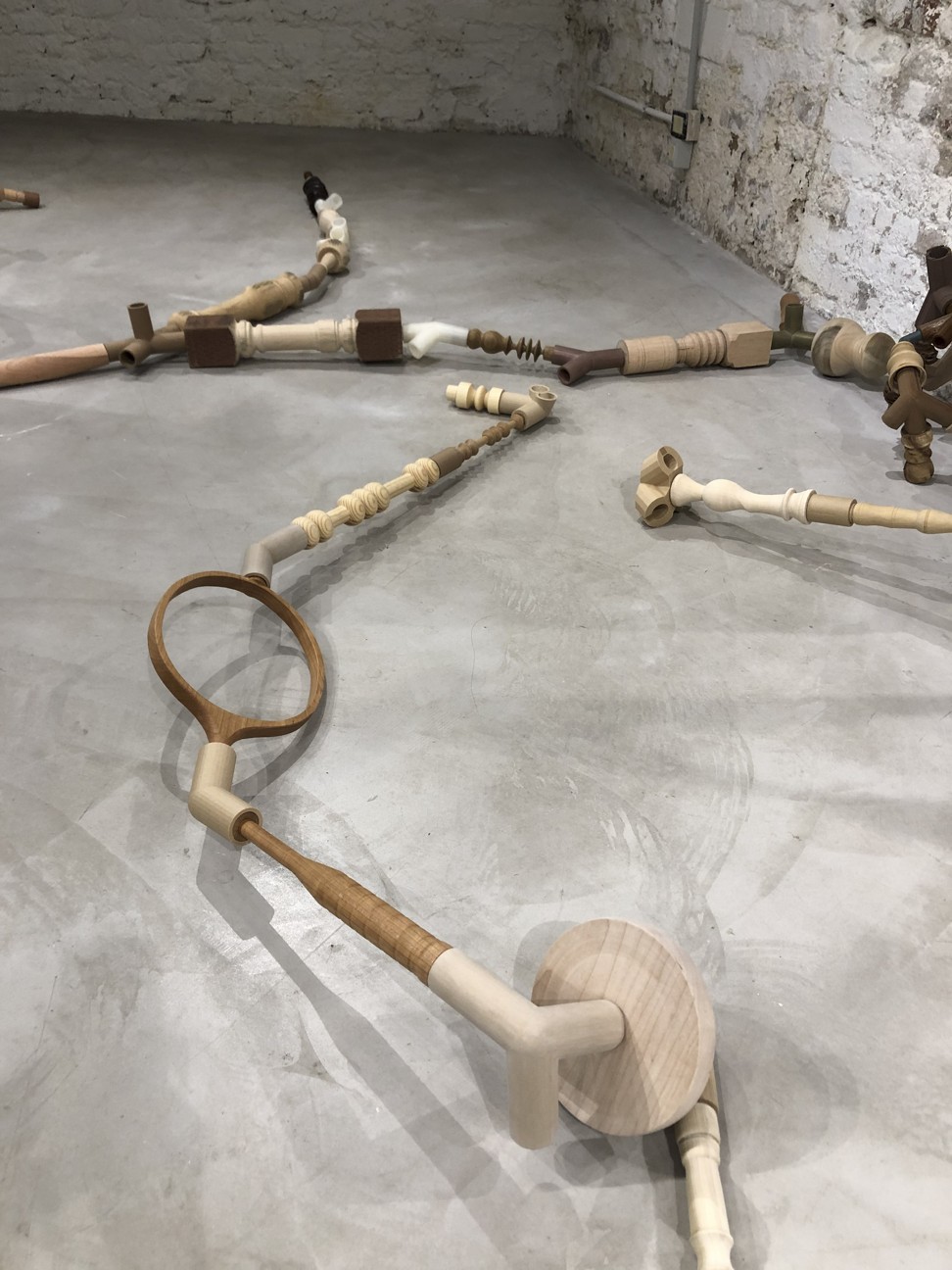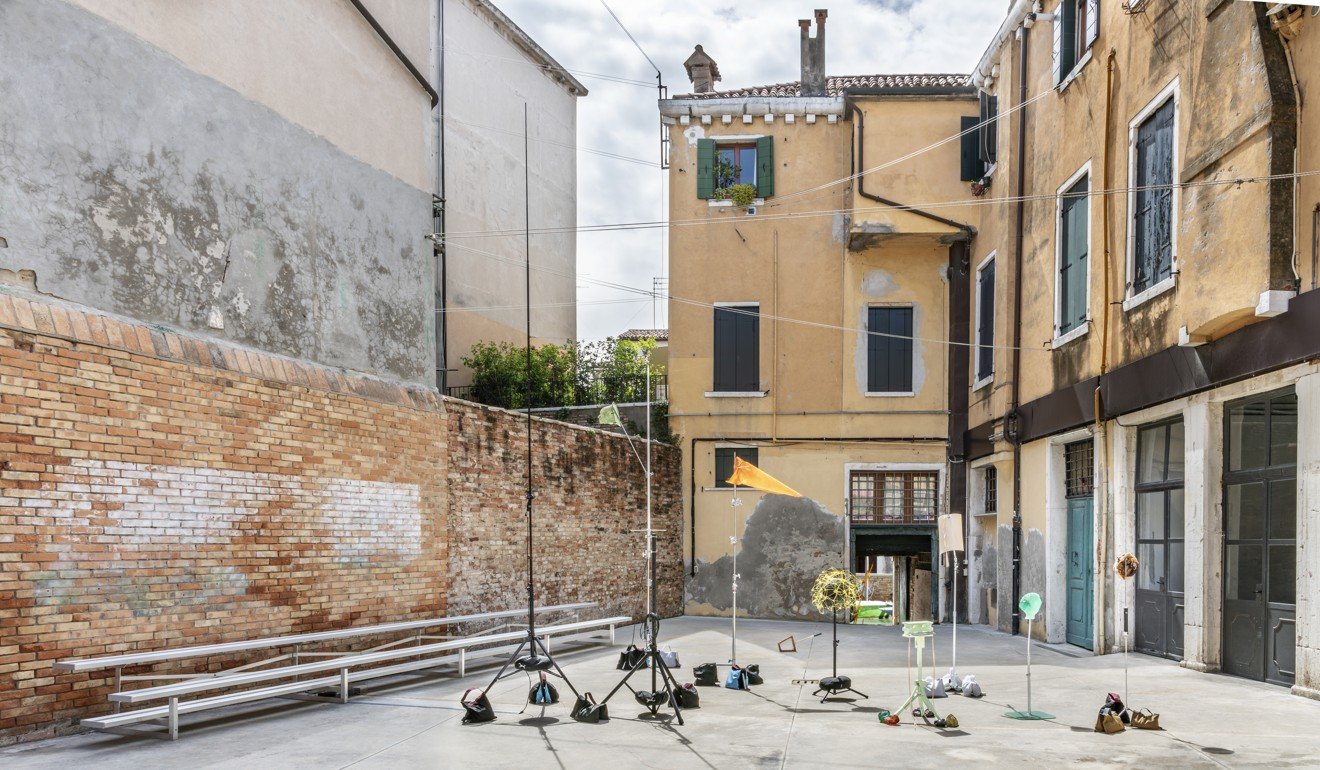
At Venice Biennale’s Hong Kong pavilion, a chimera of contradictions in sculpted wood and 3D printing
- Artist Shirley Tse has built a barricade of apparently unrelated wooden objects for her solo exhibition at the international art fair
- Each object is intentionally linked to an unrelated one, she says – a message about the need to bridge our differences
A haphazard barricade blocks the way between the reception area and the main exhibition space inside the Hong Kong pavilion at the Venice Biennale international art fair, forcing bewildered visitors to retreat outside and use a different entrance.
After they make their way from the side room into the main section, where they find themselves standing on the other side of the barricade, it will dawn on them that there is only a single, meandering piece of artwork in the entire building.
The artist Shirley Tse, 51, is best-known for working with plastics, polystyrene and other forms of synthetic polymer most often associated with toxicity and swamping the oceans. But this solo exhibition for the 2019 Venice Biennale, called “Stakeholders”, has given the Hong Kong-born and Los Angeles-based art professor a chance to fling herself into the recently discovered world of wood turning.
The piece indoors, called Negotiated Differences (2019), consists of hundreds of different components, most of them made of wood on a lathe and some, like an ice hockey stick, handcrafted by Tse and one assistant. These are all linked together with 3D-printed joints of plastic, copper or wood filaments, made to form one continuous, disorderly loop with clusters breaking out like rhizomes.

It is not immediately clear why there is a group of tumbling bowling pins – frozen in motion by the joints – near the head of a wooden badminton racket, in turn linked to some giant abacus beads. The discordance should be jarring. But visually, this strange, organic chimera is as beautiful as a piece of wood marquetry, with as many as 30 types of timber united in shades of brown.
The key to seeing the work is to understand its simple logic, Tse explains: each component has to be linked to something different. Negotiated Differences really is a work for our times, a yearning for the screaming divisiveness to be replaced by reasonable compromises and strength that lies in differences.

The bringing together of opposites has been in her practice for 20 years, says curator Christina Li – herself also a comfortable hybrid who splits her time between Hong Kong, her birthplace, and her adopted home in the Netherlands.
A host of paradoxes are embedded in the combination of wood-turning/carving and 3D printing: traditional and new, handcrafted and machine-made, as well as creation by deduction (the carving of wood) versus 3D printing’s making by addition.
“I had a category of differences I wanted to hit: abstract versus representational, sports versus the domestic space, historical versus self-references, the visible and the-non visible, like soundwaves. In the end, all these things form my visual diary even if they are not directly about me,” she says
She explains how memorable news items, when combined with her new obsession with wood turning, can make their way into the work.

She was struck by the historic nature of the joint North and South Korean women’s ice hockey team competing in the 2018 last Olympics, and since she was scouring for things she could make with wood, the then-conciliatory hockey stick ticked all the right boxes for her. It is a great game trying to identify all the representational objects that mix the American vernacular, art history and Eastern culture, and childhood memories from Hong Kong.
There’s a feng shui wooden gourd, a copy of Brancusi’s famous column, a rolling pin, US House of Representatives Speaker Nancy Pelosi’s gavel, a few recorders and, as the first woman to have a solo show in the pavilion is proud to point out, a wooden copy of a tampon applicator.
Tse says the 3D-printed joints used computer files others had written and made available as a Creative Commons free resource. “These files are really the found objects of our age,” she says.
A separate installation called Playcourt (2019) is in the outdoor courtyard. Unlike the floor-hugging Negotiated Differences, this warped version of a badminton court is all vertical, with incongruous found objects mounted on stands of differing heights.

Tse explains that some parts reference her other works – for example, the ongoing “Quantum Shirley” series, which explores what quantum physics may mean to personal identities.
Here, two old badminton racquets (with imperial brand names) lie on the ground, inviting visitors to imagine a game gone wrong. The shuttlecock is lodged in a metal grille high up on the outside wall of the building. Instead of feathers, it is made of vanilla pods, a reference to Tse’s aunt, who was born in British Malaya and moved to Tahiti to work on a vanilla plantation.
“She is not working with plastics here but this is really all about plasticity and multiplicity,” Li says. In fact, this year’s Hong Kong pavilion can be seen as a variation on the Biennale’s theme this year. Instead of “May You Live In Interesting Times”, this is more “may we live in interesting times without biting each other’s head off”.
Shirley Tse: Stakeholders, Hong Kong in Venice, Campo della Tana, Castello 2126, 30122, Venice, Italy (in front of Arsenale entrance), Tue-Sun, 10am-6pm. Until November 24

